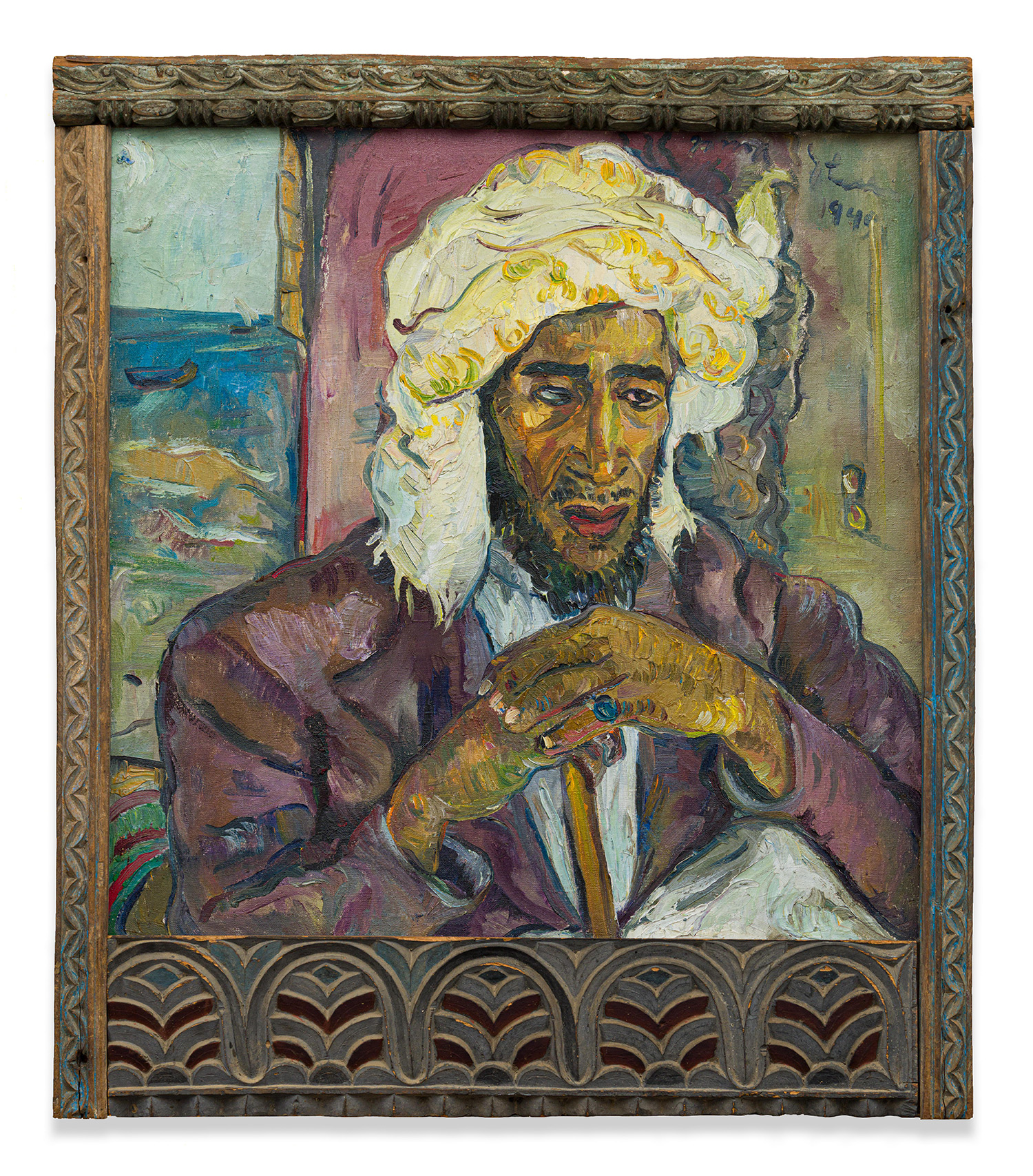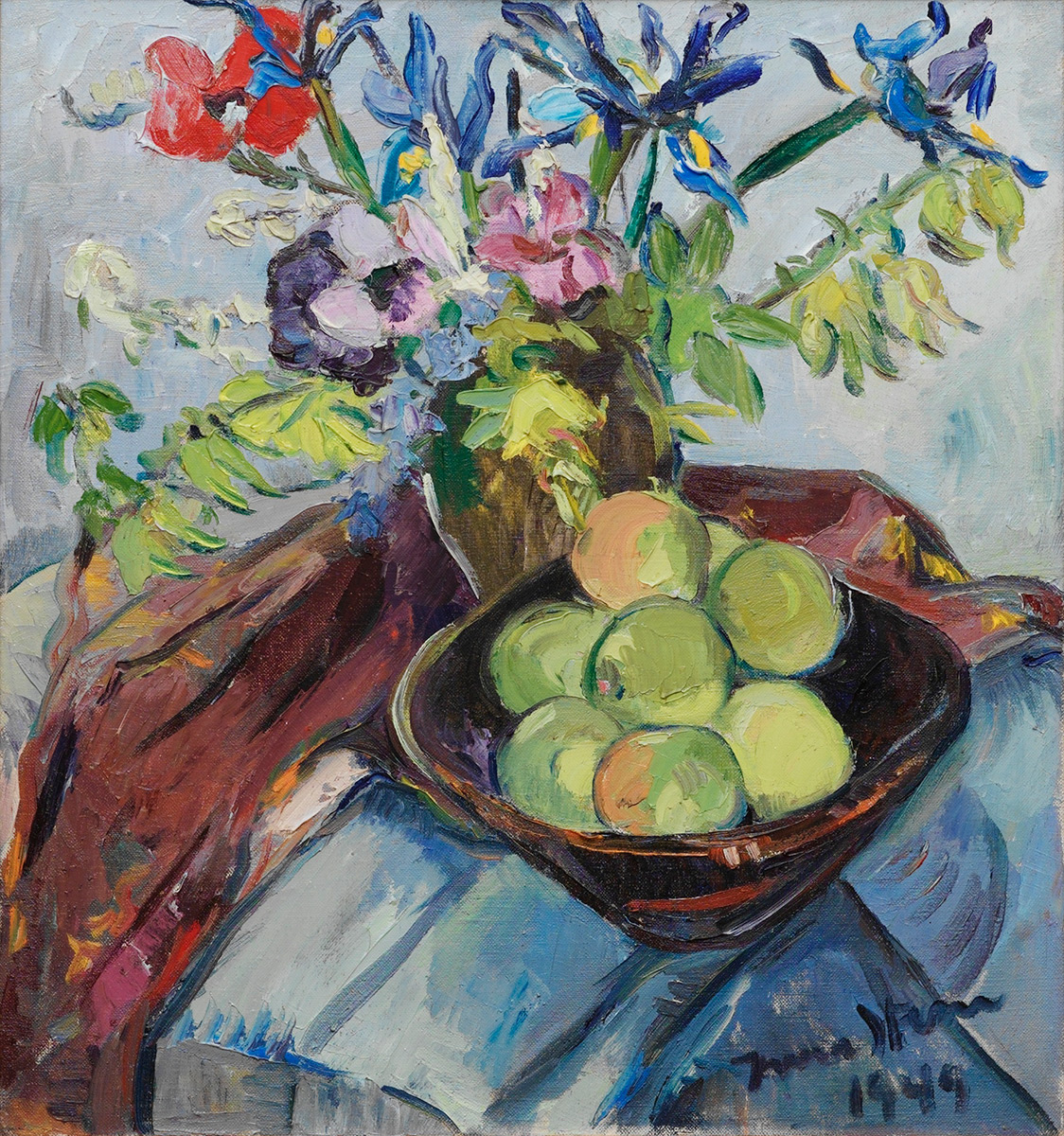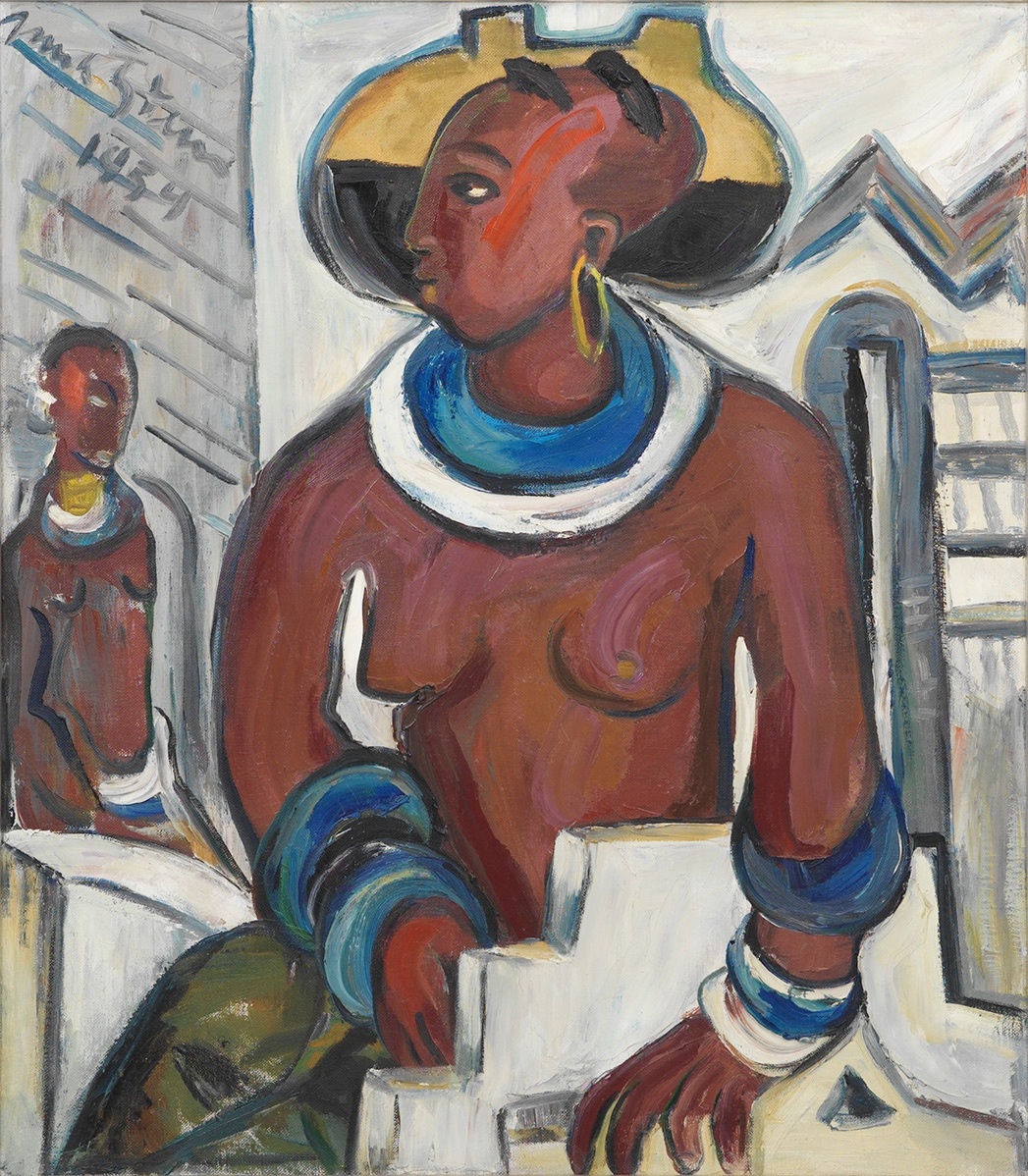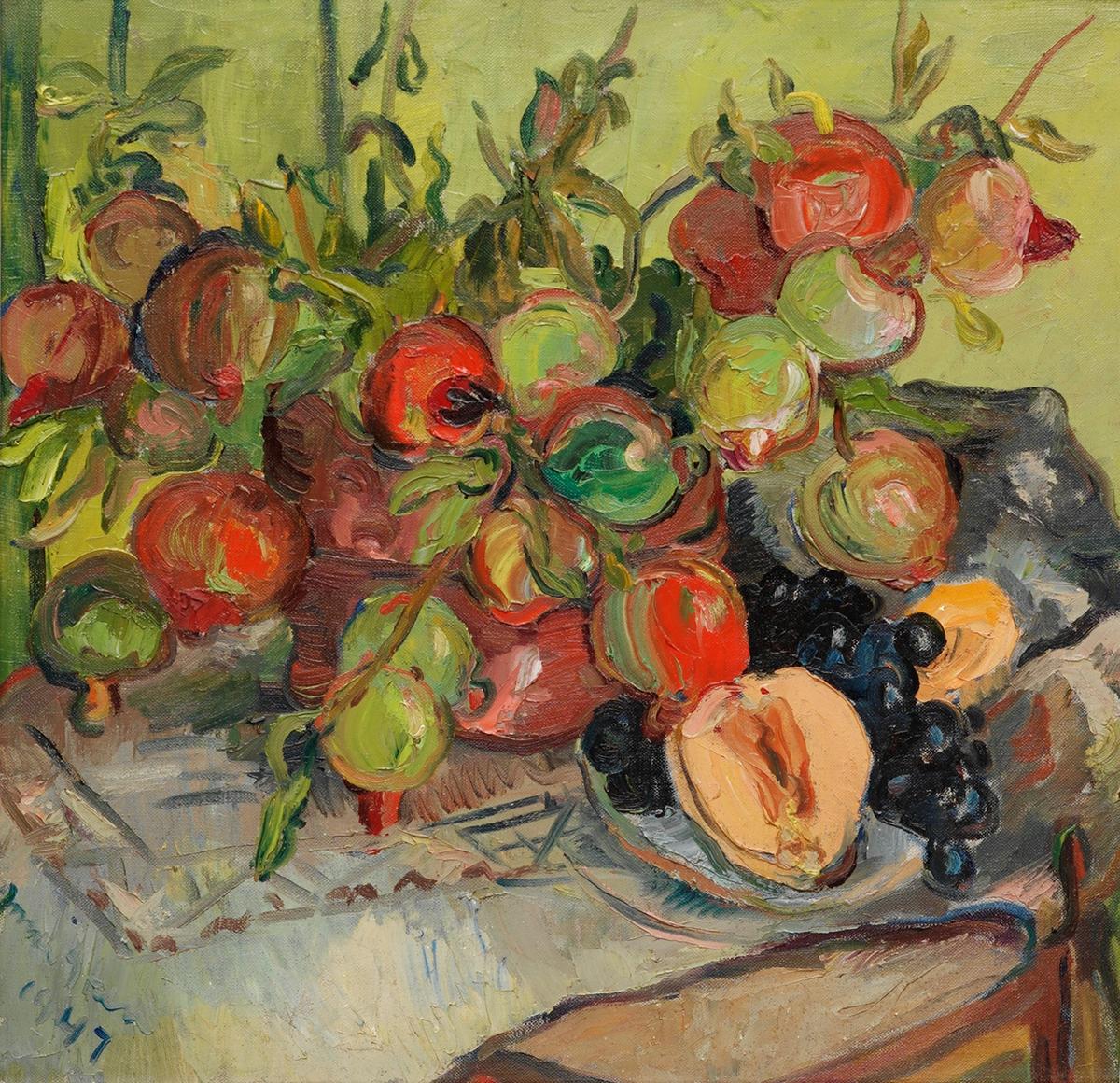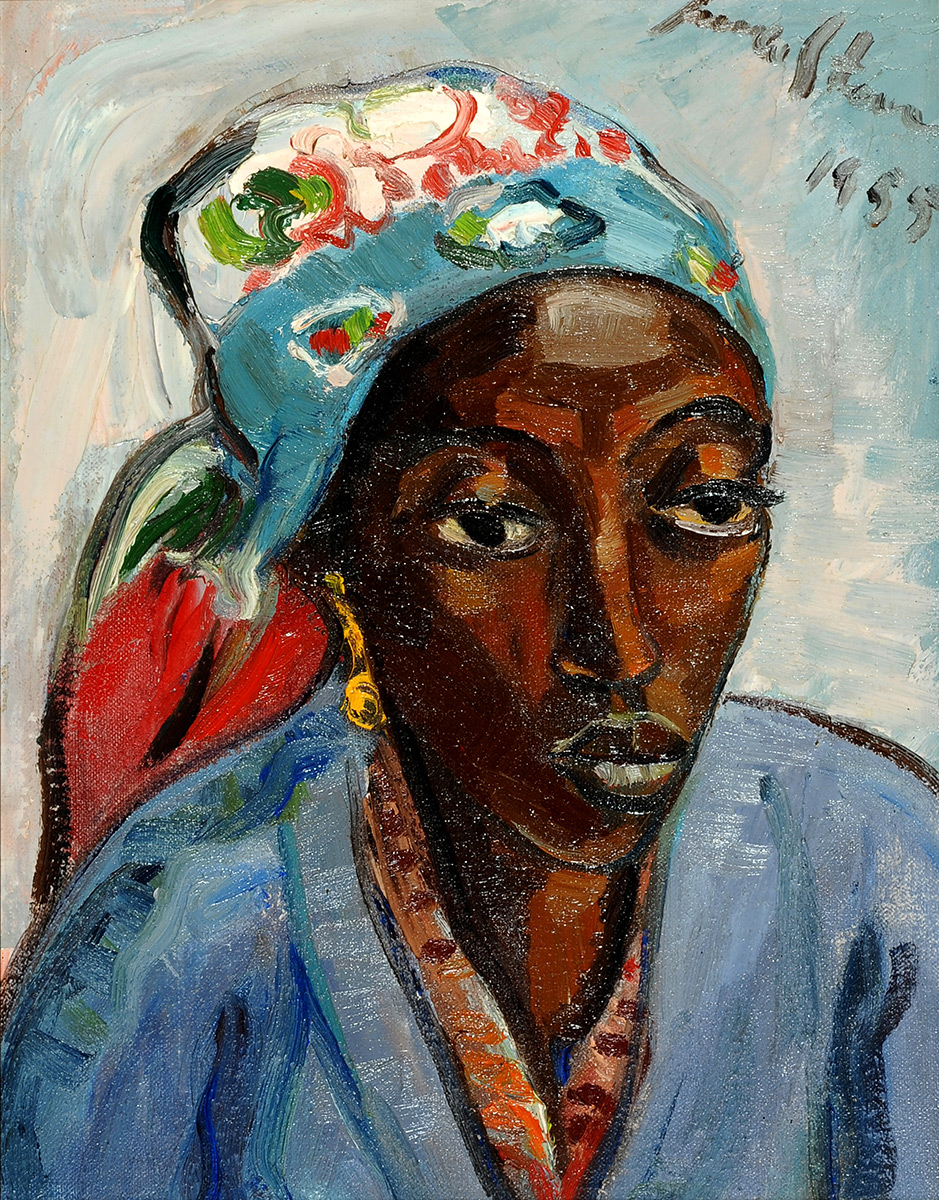Irma STERN (1894 – 1966)
Seated Arab Man
1945
oil on board
70 x 70 cm
Seated Arab Man is a major portrait painted by Irma Stern during her second trip to Zanzibar in 1945. In this portrait, a bearded man wearing a loosely tied turban, sits in the doorway of what might be his seaside home. Through the doorway we see two Zanzibari dhows, traditional Indian Ocean sailing vessels, one with a mast and slanting, triangular lateen sail, bobbing on the ocean waves. The man’s wizened face and working hands give the impression that he has endured some life struggles, but he has a nobility about him. His turban, white linen kanzu robe and jacket suggest that he has dressed for the occasion of the sitting with the artist. His hands are peacefully folded, resting on his walking stick, and he is wearing a ring with a blue stone.
Stern’s superb handling of colour is strongly evident here – in the blue stone that picks up on the tones of the azure sea, and in the warm, earthy plum hues of the man’s jacket which subtly echo the pink door in the background and the deep carmine red of the man’s lips. Similarly, her thickly applied and impassioned expressionist brushstrokes can be seen in her depiction of the motion of the sea, and the folds and rumples in the fabric of the man’s jacket and turban.
Seated Arab Man is rendered all the more compelling by its well-preserved frame of decoratively carved wood. In a sculptural choice that was ahead of its time, Stern took the decision to work with found materials and frame her works using fragments of Zanzibari doors… Continue Reading
BIOGRAPHY
Irma Stern was a major South African artist who achieved national and international recognition in her lifetime.
Stern was born to German-Jewish parents in Schweizer-Reneke, in the Transvaal (now Gauteng). When her father was interned in a concentration camp by the British during the South African War because of his pro-Boer leanings, Irma and her younger brother, Rudi, were taken to Cape Town by their mother.
In her early years, Stern and her family travelled frequently between Berlin and small rural communities in South Africa. She would continue to travel extensively in Europe and Africa throughout her life, collecting artefacts and looking for new experiences and subject matter for her paintings.
In 1913, she studied art in Germany at the Weimar Academy, in 1914 at the Levin-Funcke Studio and, notably, from 1917 with Max Pechstein, a founder of the Novembergruppe. Stern was associated with the German Expressionist painters of this period. She held her first exhibition in Berlin in 1919.
In 1920, she returned with her family to Cape Town. She journeyed to Swaziland, Mozambique, Natal and Pondoland during the early 1920s. She was a prolific painter and used expressive brushstrokes, thick paint and vivid colour to show her, often idealised, view of the world. In her portraits of the people she painted, she identified with the spiritual and emotional beauty she encountered, finding artistic freedom in her emotional and sensual response. Her subject matter included still life compositions, landscapes and portraits from the different regions she visited, executed in a variety of media ranging from oils to watercolour, gouache and charcoal.
Irma Stern’s first solo exhibition in South Africa was held in 1922 at Ashbey’s Art Gallery in Cape Town. Her modern style was very controversial, given the isolation and conservatism of the South African art scene at the time. Her work was derided and dismissed by critics, with one review titled ‘Art of Miss Irma Stern—Ugliness as a cult.’ The police were even called in to investigate charges of immorality.
She returned to Europe in 1923 and 1924, taking part in various exhibitions. With her next solo exhibition at Ashbey’s Gallery in Cape Town in 1925, the Cape Town critics, led by Strat Caldecott, were beginning to react more favourably to her painting.
Over the years, she gradually won acceptance, and by the 1940s, she had succeeded in becoming an acclaimed artist. She participated in exhibitions all over South Africa and Europe from 1946 until 1965.
Stern travelled extensively in Europe and Southern Africa, Zanzibar, Senegal, the Congo and the Congo region. These trips provided a wide range of subject matter for her paintings and gave her opportunities to acquire and assemble a collection of artefacts. She refused to either travel or exhibit in Germany during the period 1933 – 1945. Instead, she undertook several journeys in Africa.
Almost one hundred solo exhibitions were held during her lifetime both in South Africa and Europe: including Germany, France, Italy and England.
The Irma Stern Museum was established in Rosebank, Cape Town, in 1971 in the house the artist lived in for almost four decades.


